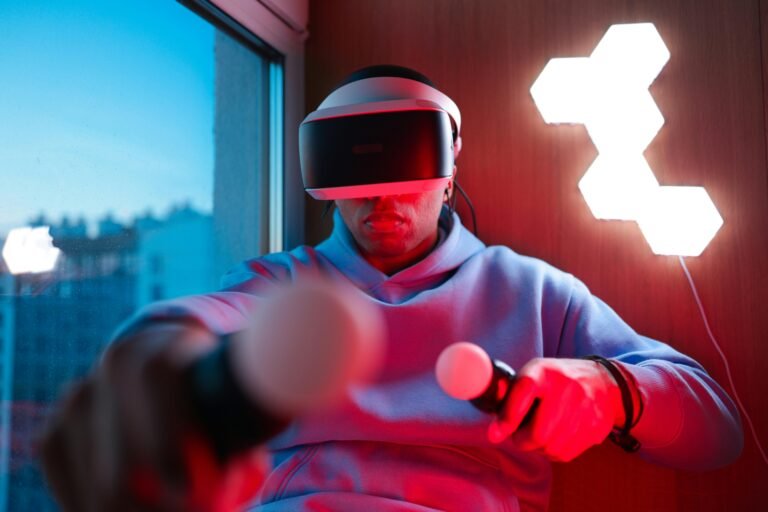Virtual reality (VR) headsets have come a long way since their inception, offering immersive experiences across various industries. But who invented the VR headset? Let’s dive right into the history and development of VR technology.

The Invention of the VR Headset
The VR headset, as we know it today, has a complex history. It wasn’t just one person who invented it, but rather a series of innovators. However, the earliest known prototype of a VR headset was created by Ivan Sutherland in 1968. Sutherland, a computer scientist, developed a device called the “Sword of Damocles,” which is considered the first virtual reality system.
This early VR device was groundbreaking, consisting of a head-mounted display (HMD) that allowed users to interact with 3D virtual environments. While it was far from the sleek, comfortable headsets we use today, it laid the groundwork for the VR technology we now enjoy.
Evolution of VR Technology
While Sutherland’s invention was the starting point, VR technology underwent significant developments through the years. In the 1980s, Jaron Lanier, a computer scientist, furthered the concept of virtual reality by founding the company VPL Research and creating the first commercial VR systems. Lanier is often credited with coining the term “virtual reality” and contributing to the commercialization of VR technology.
Throughout the 1990s and 2000s, companies like Nintendo and Sega experimented with VR gaming systems. However, these attempts were limited by the technology available at the time, including low-resolution displays and lackluster user interaction.
The real breakthrough for VR headsets came in the 2010s when companies like Oculus VR (founded by Palmer Luckey) and HTC Vive (developed in partnership with Valve) introduced advanced headsets with high-resolution displays, motion tracking, and immersive experiences. The Oculus Rift, in particular, became a game-changer for the industry, bringing virtual reality to the mainstream.
Who Invented the VR Headset: Key Contributors
- Ivan Sutherland – Developed the first VR prototype in 1968, known as the “Sword of Damocles.”
- Jaron Lanier – Founded VPL Research in the 1980s and helped commercialize VR.
- Palmer Luckey – Created the Oculus Rift and helped popularize VR in the 2010s.
How VR Headsets Work
VR headsets create an immersive environment by using two screens (one for each eye) to generate a 3D image. These screens are paired with sensors, such as accelerometers and gyroscopes, which track your head movements to adjust the image in real-time, creating the illusion of being inside a virtual world. Additionally, some VR headsets use external sensors or cameras to track your full-body movements.
The Future of VR Technology
Today, VR headsets continue to improve, with companies focusing on reducing the size and increasing the comfort of the devices. Future developments may include wireless VR, higher resolution displays, and more interactive environments, pushing the boundaries of what virtual reality can do.
So, who invented the VR headset? While Ivan Sutherland created the first VR prototype in 1968, the technology has evolved over time through contributions from Jaron Lanier, Palmer Luckey, and others. The combination of their innovations led to the modern VR experiences we enjoy today. VR technology has come a long way and is now being used in entertainment, education, and even medicine, and it will likely continue to evolve in the coming years.
